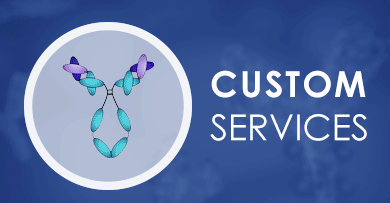+ Filter
 Loading...
Loading...

PTPRE
 Loading...
Loading...Anti-PTPRE Products
- Chicken Anti-PTPRE Polyclonal IgY (BRD-0467MZ)
-
- Species Reactivity: Human
- Type: Chicken antibody
- Application: WB
-
- Derivation: Phage display library screening
- Species Reactivity: Human
- Type: IgG
- Application: WB, FC
- Anti-PTPRE Immunohistochemistry Kit (VS-0525-XY5878)
-
- Species Reactivity: Human
- Target: PTPRE
- Application: IHC
- Anti-Mouse PTPRE Immunohistochemistry Kit (VS-0525-XY5879)
-
- Species Reactivity: Human, Mouse, Rat
- Target: PTPRE
- Application: IHC
View More Products
Can't find the products you're looking for? Try to filter in the left sidebar.Filter By Tag
More Infomation
Our customer service representatives are available 24 hours a day, from Monday to Sunday. Contact Us
For Research Use Only. Not For Clinical Use.
Background
The protein encoded by this gene is a member of the protein tyrosine phosphatase (PTP) family. PTPs are known to be signaling molecules that regulate a variety of cellular processes including cell growth, differentiation, mitotic cycle, and oncogenic transformation. Several alternatively spliced transcript variants of this gene have been reported, at least two of which encode a receptor-type PTP that possesses a short extracellular domain, a single transmembrane region, and two tandem intracytoplasmic catalytic domains; another one encodes a PTP that contains a distinct hydrophilic N-terminus, and thus represents a nonreceptor-type isoform of this PTP. Studies of the similar gene in mice suggested the regulatory roles of this PTP in RAS related signal transduction pathways, cytokine-induced SATA signaling, as well as the activation of voltage-gated K+ channels.
Protein class
Enzymes, Metabolic proteins
Predicted location
Intracellular, Membrane (different isoforms)
Single cell type specificity
Cell type enhanced (Langerhans cells, Macrophages, dendritic cells, Oligodendrocyte precursor cells, Inhibitory neurons)
Immune cell specificity
Immune cell enhanced (neutrophil, plasmacytoid DC)
Cell line specificity
Cell line enhanced (hTERT-RPE1, HUVEC TERT2, NB-4, TIME)
Interaction
Monomer. Isoform 2: Homodimer. Can form oligomers. Dimerization is increased by oxidative stress and decreased by EGFR. Isoform 2 interacts with GRB2 (By similarity).
Molecular function
Hydrolase, Protein phosphatase
More Types Infomation



